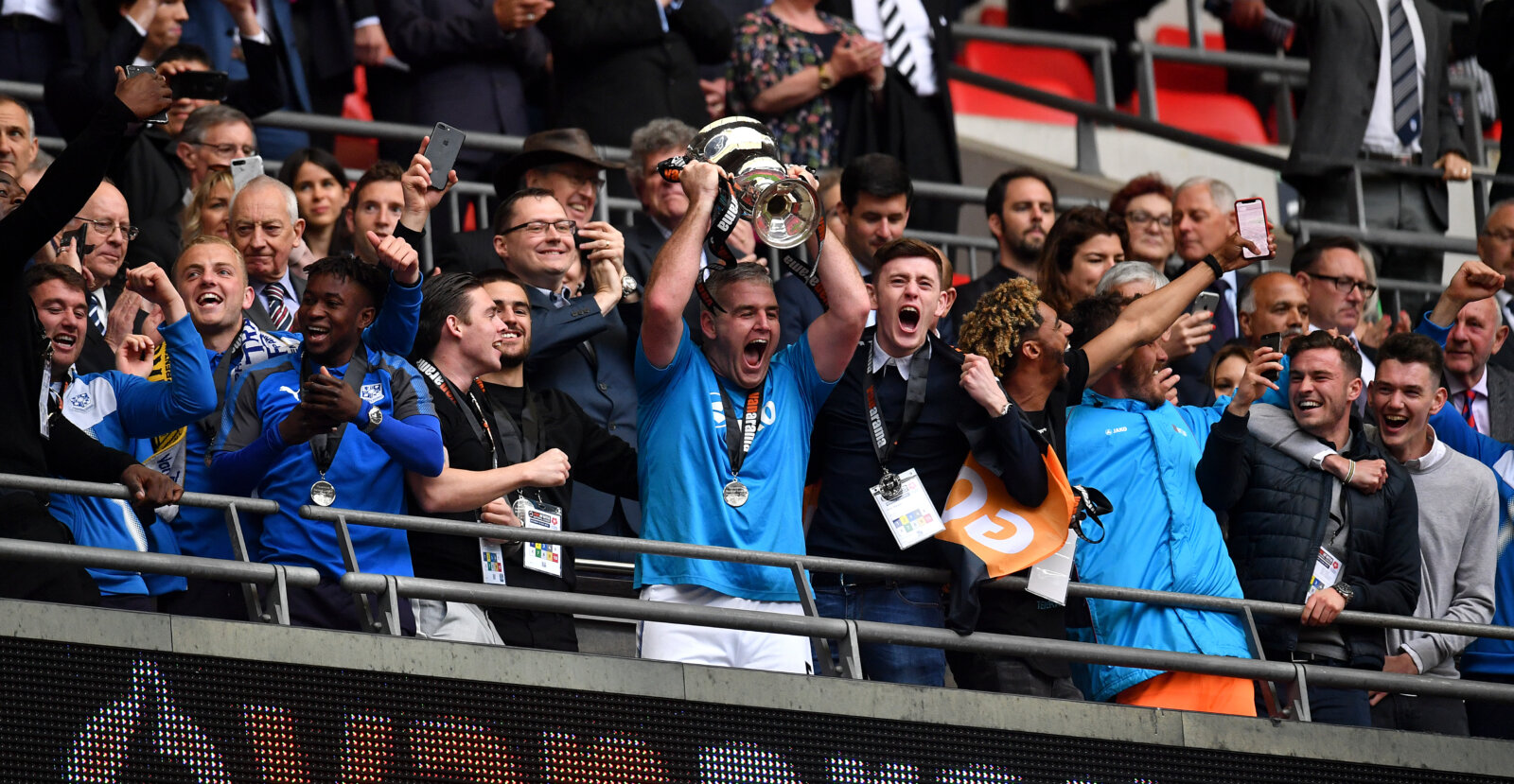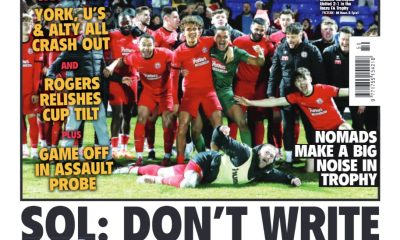
Steve McNulty wins promotion with Tranmere Rovers at Wembley
Chris Dunlavy discovers why you can’t judge a book by its cover
Has any player ever looked less like a footballer than Steve McNulty? Grey of pate and ample of girth, the 36-year-old was famously nicknamed ‘Sumo’ at Luton Town.
“I’ve heard all the names,” said the central defender, now throwing his considerable weight around for York City at the summit of National League North.
“You fat b*****d. Who ate all the pies? In fairness, I didn’t do myself a lot of favours in my twenties. My diet wasn’t always the best and at times I was probably drinking more than I should have. So I’ve only got myself to blame.”
Yet as dismayed opponents have repeatedly discovered over the last 17 years, appearances can be deceiving.
“You took the p*** out of Macca at your peril,” says Dave Bayliss, who managed his fellow scouser at Barrow from 2007-09.
“I could always hear managers going ‘Turn him, turn him, get down the sides’ or saying that he couldn’t run.
“But in two years I never once saw him get done for pace. He was so clever, and he could play as well. Anybody who underestimated Macca learned the hard way that they’d made a mistake.
“In terms of his organisational skills, his ability on the ball and his footballing brain, he’s one of the best centre-halves I’ve seen outside of the Championship.
“If he’d had a bit more pace, well… I wouldn’t be talking about him in The Non-League Paper, put it that way.”
Micky Mellon, who managed McNulty at Fleetwood Town and Tranmere Rovers, puts it another way. “Steve always seemed to be where the ball was going to be, rather than have to get there after it arrived,” he says.
McNulty’s tactical proficiency is no fluke. On the books at Liverpool for more than a decade, the boyhood Evertonian captained the Reds’ Under-19 side to the semi-finals of the FA Youth Cup.
Neil Mellor, who played 22 times for Liverpool before forging a successful career in the EFL with Preston, was a team-mate in those days.
“Macca was younger than me, but he always played a year above himself,” says the 37-year-old, now a pundit with Sky.
“He was a man, even then.
“He was from a tough area, so he knew how to handle himself. He wasn’t scared or quiet in the dressing room. And he had our respect because he was a quality player on the park. He was a physical, strong lad who read the game very well. Aggressive but not nasty. And if there was a pace issue back then, we never noticed.”
Unlike Mellor, McNulty never broke through at Liverpool, stymied even as a teenager by concerns over his physique.
“It was different then,” adds Mellor. “These days, young lads never hear the end of sports science and nutrition.
“For us, it was very basic. There was no ‘You have to to be on this diet’ or talk about protein intake. Lads were getting McDonald’s after training – and before, sometimes!”
Released at 20, McNulty briefly drifted. But after revitalising spells at Burscough and Vauxhall Motors, he set about building a reputation as arguably the finest Non-League centre-half of his generation.
It wasn’t just the promotions, though there were certainly plenty of those. Two from National League North. Three from the National League. One from League Two, where he was also named in the 2014-15 PFA team of the year. But for lockdown, another title at Step 2 may have followed.
It was the transformation his arrival routinely inspired. With the exception of Fleetwood, every club McNulty joined was in some degree of disarray.
Barrow had finished the 2006-07 season 16th in Conference North, the joint-lowest placing in the club’s history.
Luton was a cesspit of discontent, morale in tatters after three frustrating seasons outside the EFL. Tranmere had tumbled into Non-League two years after challenging for the Championship.
Each quickly morphed into a harmonious winning machine, and whilst credit for that must be widely shared, McNulty – who wore the armband at every club – was the common factor.
“When Steve walked into a struggling club, you knew their troubles were over,” says Bayliss. “It was that simple.
“He brought assurance. Organisation. And he brought the club together. When fans see someone like Macca on the pitch – who is passionate, who’ll shout, who’ll order people around – they feel represented. It has an incredible effect.”
Mellon, meanwhile, says McNulty’s consistency should see him ranked alongside former Fleetwood team-mate Jamie Vardy as one of the greatest Non-League players of recent years.
“I have a saying that every game asks you a question,” says the Scot, who released McNulty from Prenton Park following promotion to League One last May. “No matter what level he played at, Steve answered them.
“People always focus on the creative side of the game. They go on about people like Vardy, Lee Fowler – eye-catching players who do brilliant things.
“But Steve was just as brilliant at what he did. Organising. Reading the game. Staying out of areas where he knew he’d be exposed. And he did that so reliably.
“Any player can be good at a certain thing. The big ask is, can they do it consistently? Steve was good at what he did every week for every club.
“That’s why he’s been successful, and why he was comfortably the best centre-back in every league he played.”




















